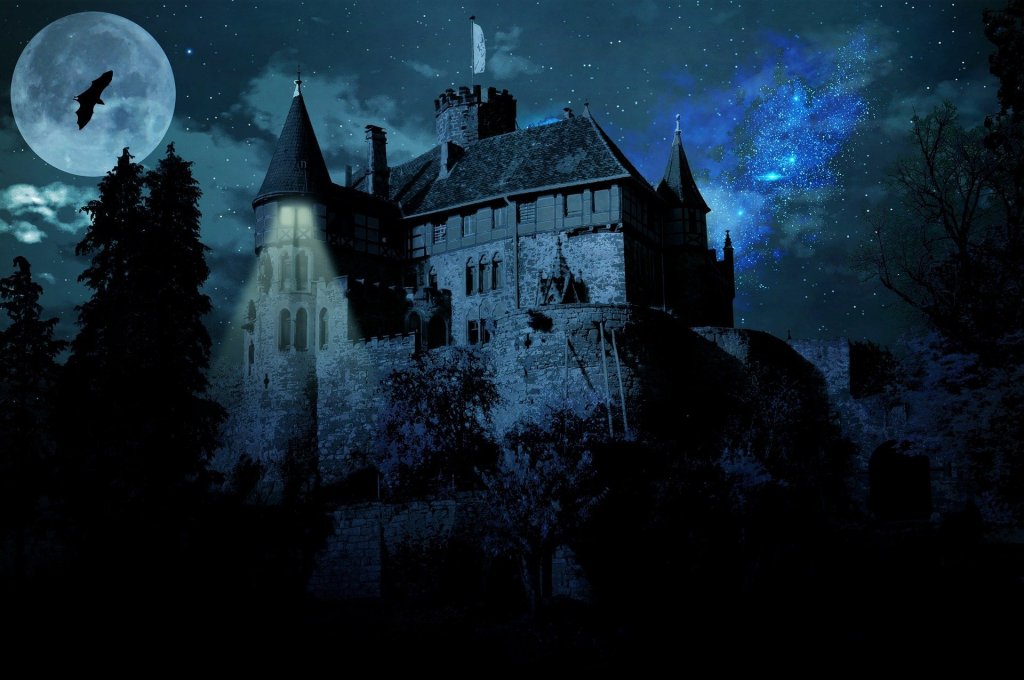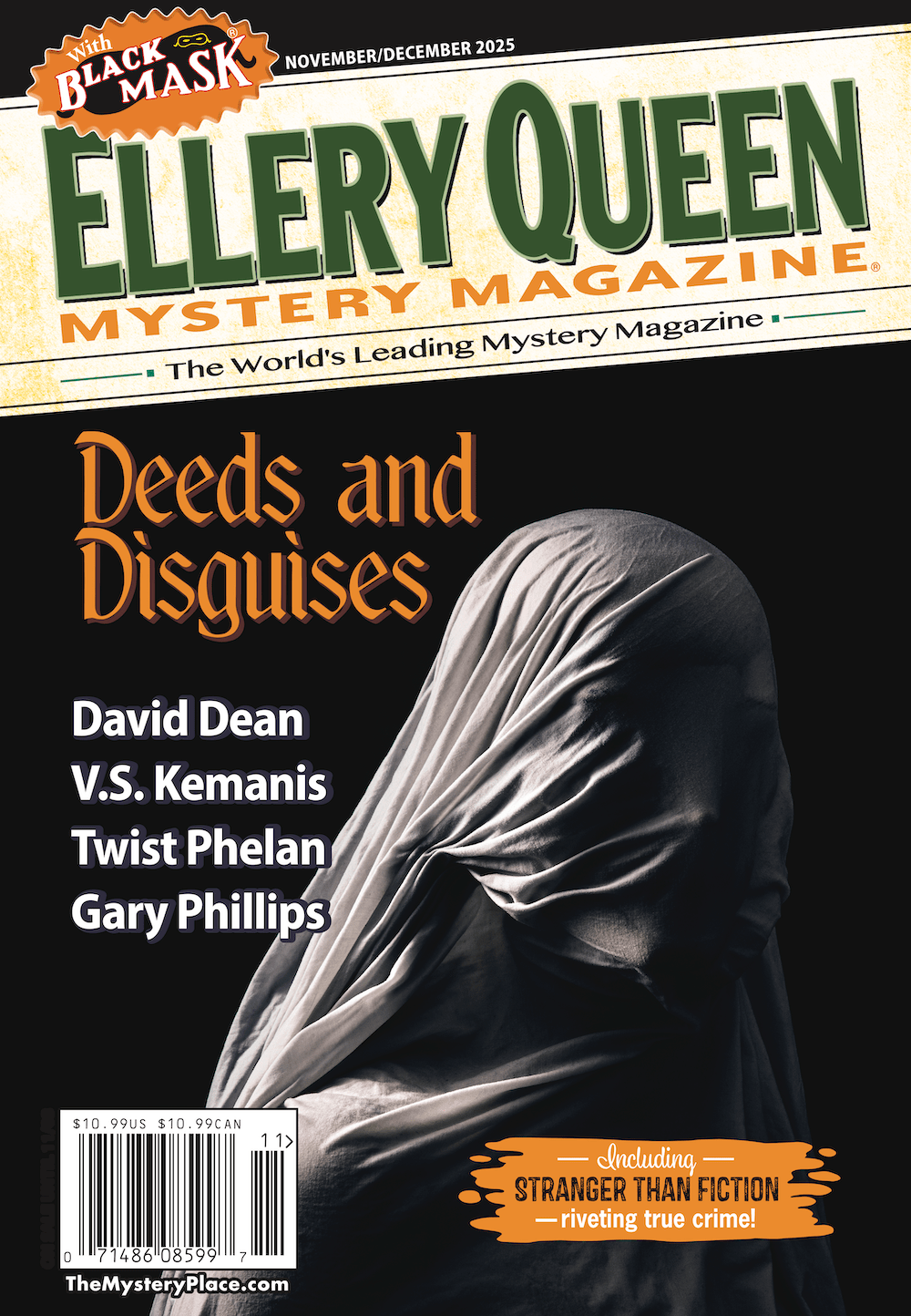EQMM regular Pat Black returns in our Jan/Feb issue with the story “Santa Dash in Blue.” Learn all about the Glaswegian Christmas tradition that inspired this latest story, along with some of Pat’s favorite Christmas television programs from the UK in this delightful Q&A

Ellery Queen Editor: How did you come to write this story? What was the inspiration and/or what are the techniques you used?
Pat Black: “Santa Dash In Blue” is part of the ongoing multiverse of anthologies that mostly live in my head. One of these is “The Gigantic Book of Christmas Stories”. I love to write festive stories; I knock off a couple every year. Another multiverse anthology is, “The Big Book of Inspector Lomond Stories”, and many of these have appeared in Ellery Queen. How to get these two crazy kids together? I thought.
It’s based on the annual charity Santa Dash that takes place in Glasgow every year—a 5K run through the city centre, with the runners dressed as Santa.
The irresistible thought: what if Lomond was looking for one of those Santas, if he’d committed a crime? How would he identify him, or trick him into revealing himself?
But, being Lomond, being Glasgow, and being Christmas, it’s not quite as straightforward as a cop chasing a criminal.
I love Christmas . . . perhaps not quite as much as I did when I was five, but it’s getting there. I’ve thrown myself into it, with my nieces and nephews, way before I became a dad. My mother loved Christmas, and I want to pass that joy on. There was a time, though, when I didn’t like Christmas much at all. I’d either dodge it with work, or the pub. I regret, oh, one of these choices… one and a half, maybe. But I know that with the darker days, there can be dark thoughts, dark memories, dark prospects, and painful reminders of all the people who can’t celebrate with us. If I’m not careful, these can still sneak up on me. It comes with the territory. Or the Celtic genes. Or maybe it’s a lack of vitamin D. I’m not sure. Either way, I think that there is more than one reason we follow our star at this time of year, why we put the lights on, and why we seek them out, and why we celebrate them.
And, if any of my characters are Santa, it’s Inspector Lomond.
So, from me, and Lomond, to every Ellery Queen reader, I hope your turn out of the darkest part of the year (in the northern hemisphere, anyway!) is peaceful, happy and a feast of fulfilled wishes. Here’s to you.
EQE: When you’re not writing, what do you do with your time? Do you have other artistic endeavors or anything you’d like to share? Do those activities influence your writing or reading?
PB: I don’t have much spare time; I work full time, and I have two young children, so free time is at a premium, or utterly non-existent. School, clubs, swimming, karate, theatre group, Guides, Beavers . . . all the birthday parties . . . it doesn’t stop. And I am thriving with it.
I like to say I have to steal my time to write, and it sometimes gets a laugh, but I’m not so sure I have the time to steal any more. It’s a blessing. I’m busier, but also happier than I’ve ever been.
I do take time to run. I’ve got one of these fitness trackers (one of my multiverse anthologies is The Big Book Of Fitness Tracker Horror Stories), and it’s a great way to keep an eye on the numbers – heart rate, breathing rate, skin temperature, midichlorian count, days left until next lycanthropic episode, all that stuff. If you suggested I was a fitness freak or health junkie I might die laughing, but I do have wee targets to hit, and levels I don’t want to fall to. Running is the high I was looking for all along; I hope I am always well and able enough to do it. I didn’t say I was fast, mind you.
But staying alive is not really a hobby, is it? Damn. Well, I love playing daft games with the kids and making comedy videos. These make me laugh now, never mind when I look back on them when I’m old.
There’s a part of me that kids myself on I could write and perform music, and also that I am a good artist, but I have a suspicion neither of these things are true. In my head I can dance, too, but that is definitely untrue.
As I said at a recent writers’ panel, if you ask me to draw a car, I’ll start to draft one of those Stickle Brick numbers. Mind you, the compere of the panel told me, “No—you are an artist, because you drew something,” and that got me thinking. I’d love to take a class, move the muscle a bit. I want to be Bob Ross, is what I’m saying.
EQE: Do you read and/or write mainly short fiction, or do you read and/or write at other lengths as well?
PB: I write short stories, novels, novellas, novelettes, plays, poems, and on increasingly rare occasions I can be persuaded to construct off-colour limericks. The idea that I’ll never be able to complete all the projects that live in my head genuinely disturbs me. Well, here goes anyway:
EQE: Share a book review, movie or television review, or interview with us.
PB: Going back to the top, there is a beautiful short story by Truman Capote that has become a festive perennial for me. I first encountered “A Christmas Memory” on a TV adaptation that was shown during the blessed, slow days of the school holidays. Buddy and Sook’s adventures together enchanted me. I got the weird melancholy of it, the sense of oddbods living their best life, such as it is; and deeper yet, that idea of time running out, that you have to cherish your precious days with loved ones, and always fly the kites, always make the fruitcakes—and send them to FDR if you must. I understood this, even when I was way too young to worry about such things.
This memory of watching the TV movie always stayed in my mind from childhood. Of course, it’s a very famous story by a very famous writer, but I didn’t know that until recently. I think Truman Capote would have loved that, had he known. It’s widely anthologised, you’ll find it no trouble if you care to look, and I think you should. It’s a beautiful piece of work.
Another key memory for me is The Box Of Delights, by John Masefield. Many people in the UK of my generation have an indelible memory of the TV adaptation by the BBC from 1984—at the time, this was the most expensive drama ever made by the children’s department. It was a thing of magic and wonder, with its snow, its English country house, its steam trains, its home-for-the-holidays excitement. And then there’s the wolves, its sword-swinging Arthurian interludes, its gorgeous hand-crafted animation, its gratuitous use of a Patrick Troughton as the twinkly-eyed Punch and Judy Man, and Robert Stephens helping himself to generous mouthfuls of scenery as the gleefully nasty Abner Brown.
I rewatch the series every year, but John Masefield’s original inter-war years classic is worth a read, too. I’ve got an edition of it right beside me as I type (with Quentin Blake illustrations, if you really want to treat yourself). I’ll have to steal some time to open it, too. It’s all about the magic, and keeping it alive, and passing it on. That was my most magical Christmas, one I keep coming back to in my mind. I had just turned eight. My youngest kid has also just turned eight; I hope I can give my wee ones a Christmas as good as the Box of Delights Christmas . . . The ones they’ll always remember.
Enjoy your festive season, everyone, however you celebrate it, and whatever you’re celebrating. Get together, have fun, and, if it’s not too painful, remember the ones who can’t be with you.
Dickens was definitely onto something . . .











